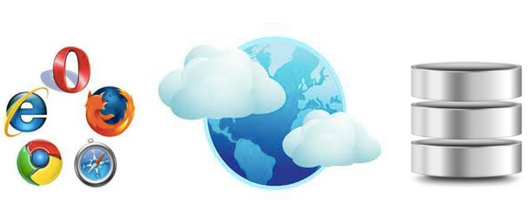This is part 2 in a series on End User Experience Monitoring - Use it or ‘Lose' it.
In part 1 of this series, we have discussed how leading businesses are increasingly relying on IT and why application availability and ensuring a good end user experience are critical to business survival. In this segment, we will explore what End user experience monitoring really means and learn some other key dimensions of functionality of an Application Performance Management tool.
What does End User Monitoring really mean?
Gartner defines End User Monitoring (EUM) as the capture of data about how end to end application availability, latency, execution correctness and quality appear to the end user.1
The End user experience is the result of a combination of your browser, network and server latency. So, monitoring just one of these components such as the server side latency cannot give you the holistic picture of the state of your application.

Figure 1: Topology of Server side monitoring
To get the complete picture, we need to measure application performance starting from the end user’s web browser all the way to the back end as shown in the picture below.

Figure 2: End user monitoring starts from the browser all the way to the backend
According to Gartner, End User Experience Monitoring is one of the five dimensions that an APM tool vendor needs to deliver2. The other four dimensions that has to be delivered by an APM vendor are:
- Runtime application architecture discovery modeling and display
- User-defined transaction profiling
- Component deep-dive monitoring in application context
- Analytics
Several APM vendors in the market today are trying to provide all of the above dimensions of functionality. In the last few years however, very few of them were identified as the leaders in the Gartner’s Magic Quadrant.
If you are interested to learn more about APM and who are the current champions in the APM segment, you can get a free copy of Gartner’s 2013 Magic Quadrant here.
Key Benefits of End User Monitoring
With End User Monitoring, customers will be able to leverage the following features:
Monitor their global audience and be able to easily track End user experience across the globe to pinpoint which geo-locations may be impacted by poor Application Performance
Capture the end-to-end performance metrics for all or specific business transactions – including page rendering time in the Browser, Network time, and processing time in the Application Infrastructure
Identify issues or bottlenecks anywhere in the end-to-end business transaction flow to help Operations and Development teams identify problems and troubleshoot quickly
Compare performance across all browsers types – such as FireFox, Google Chrome, Safari, Internet Explorer, iOS and Android
Stay tuned for the next week’s entry where we will be exploring who benefits the most out of end user experience monitoring, and some of the interesting EUM views that will help us to drill down into the root cause for poor end user experience.




